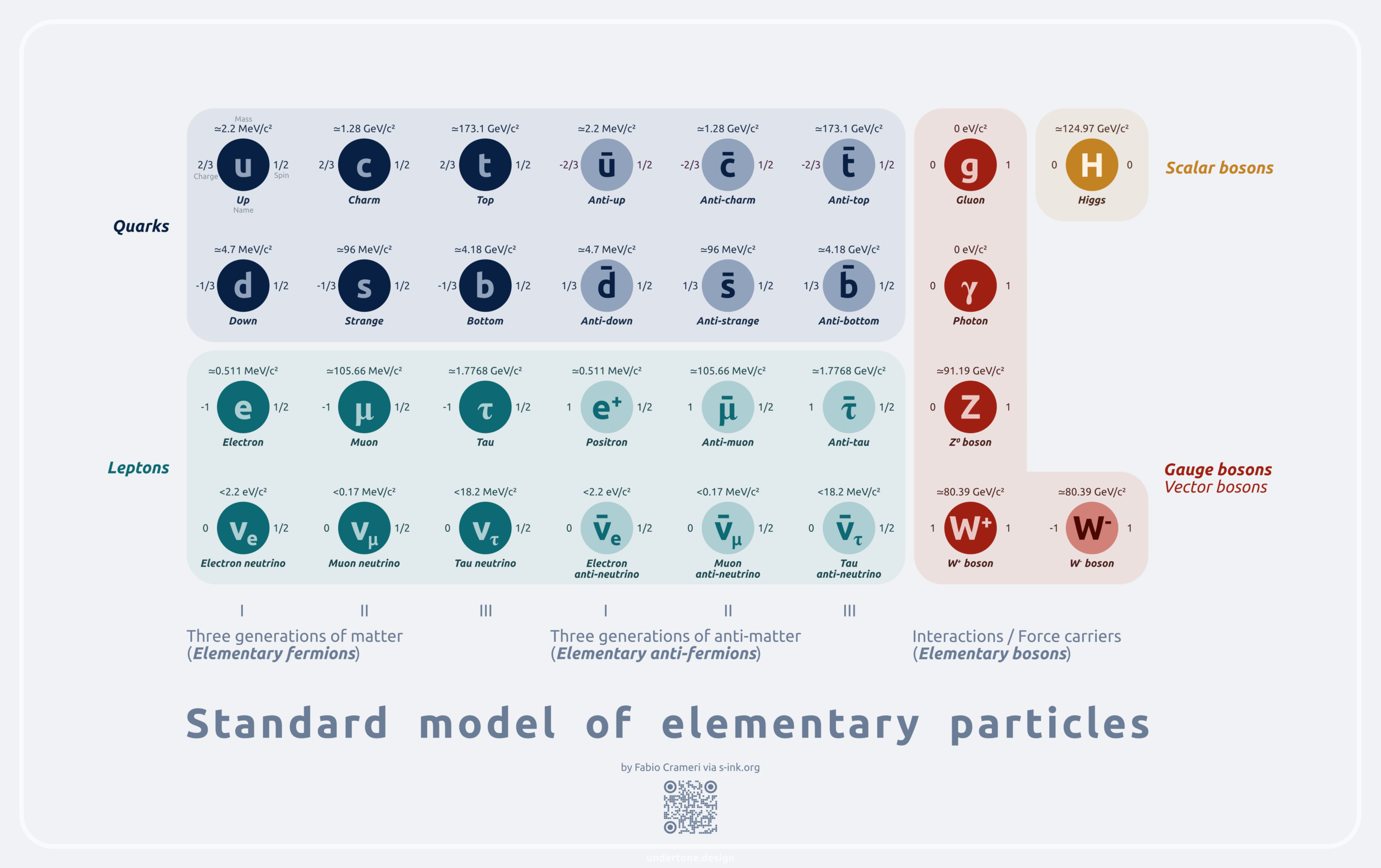In the realms of modern physics, elementary particles occupy a fundamental status, serving as the building blocks for all matter in the universe. Yet, these minuscule entities are inherently elusive, challenging the very fabric of human perception and observational methodology. This prompts an intriguing question: Are there any theories on how to visualize or “see” elementary particles? This exploration not only delves into the mechanics of particle interaction but also investigates the innovative theoretical frameworks that scholars and physicists have developed to address this conundrum.
To commence our investigation, it is essential to establish what is meant by “seeing” elementary particles. Traditional visual perception relies on the interaction of photons with macroscopic objects, forming images captured by our eyes. However, elementary particles, which include quarks, leptons, and gauge bosons, exist at a scale orders of magnitude smaller than the wavelength of visible light. Consequently, direct optical observation remains an impossibility, inciting the scientific community to devise alternative methods to infer the presence and characteristics of these fundamental constituents.
One prominent strategy involves the utilization of particle accelerators, colossal machines designed to propel charged particles to relativistic speeds before colliding them together. The high-energy collisions result in an array of secondary particles that can be detected and analyzed. For instance, the Large Hadron Collider (LHC) has enabled the experimental confirmation of the Higgs boson, a particle theorized to impart mass to other particles through the Higgs mechanism. While the LHC provides empirical evidence of particle existence rather than visual images, it stands as a testament to humanity’s capacity to “see” the unseen through indirect observation.
Further, the domain of quantum field theory posits that particles are excitations of underlying fields that permeate space-time. This theoretical framework not only enriches the discourse surrounding particle visualization but also posits a paradigm shift in perception. When we consider particles as manifestations of fields, “seeing” these particles could warrant a more nuanced understanding—potentially allowing for the visualization of fields rather than the particles themselves. The challenge then becomes one of developing advanced visualization techniques capable of representing these enigmatic fields in a comprehensible manner.
In pursuit of visualizing elementary particles, another fascinating avenue lies in the realm of quantum entanglement. This phenomenon occurs when pairs of particles become interconnected, such that the state of one particle instantly affects the state of the other, regardless of the distance separating them. While quantum entanglement defies classical intuitions about locality and causality, it also introduces the prospect of “seeing” particles via their entangled counterparts. This notion has sparked curiosity among physicists, as they theorize that by engineering entangled states, it may be feasible to extract information about an elementary particle’s properties and behaviors indirectly.
The introduction of advanced technologies such as quantum sensors brings yet another dimension to the challenge of making elementary particles visible. Quantum sensors exploit the principles of quantum mechanics to measure phenomena with unprecedented precision. By utilizing these devices in conjunction with particle collision experiments, it may be possible to discern minute fluctuations in fields related to particle interactions, thus indirectly revealing the presence of elementary particles and their elusive characteristics. This intersection of technology and physics highlights the continuing evolution of theoretical frameworks in addressing the formidable challenge of visibility.
Moreover, advancements in visualization techniques, driven by high-performance computing and data analytics, have led to the creation of sophisticated simulations that depict potential particle interactions and formations. These computational visualizations provide a conceptual understanding of elementary particles and the complex forces governing their behavior. Utilizing such simulations, researchers can visualize particle processes that may be imperceptible through conventional means, allowing them to present a more comprehensive picture of the interplay within the quantum realm.
Theoretical physicist Nima Arkani-Hamed’s notion of “amplitudes” further illuminates the discourse on particle visualization. Arkani-Hamed suggests that particle interactions can be represented through mathematical constructs called scattering amplitudes. By focusing on these amplitudes, scientists can gain insights into the underlying dynamics governing particle behavior. The challenge lies in translating this abstract mathematical framework into a visual representation that encapsulates the intricate relationships between particles and forces. This interplay between mathematics and visualization serves as a critical frontier in the quest to “see” elementary particles.
Lastly, the integration of interdisciplinary approaches promises to enrich the dialogue regarding the visualization of elementary particles. Collaborations between physicists, artists, and computer scientists have the potential to yield novel visualizations and representations of fundamental phenomena. For instance, artists may use their creativity to depict complex particle interactions in engaging and informative ways that complement scientific discourse. This collaborative synergy embodies a rich tapestry of ideas, strategies, and methodologies that galvanize our efforts to approximate an understanding of the microscopic world.
In summary, while the notion of “seeing” elementary particles introduces a complex and tantalizing challenge, a multitude of theoretical approaches and technical innovations are pioneering new pathways for exploration. From the transformative capabilities of particle accelerators to the nuanced implications of quantum field theories and entanglement, as well as the advent of advanced quantum sensors and interdisciplinary collaborations, the quest for visibility remains a rich vein of inquiry. As humanity continues to delve deeper into the quantum realm, our understanding of these elementary constituents stands to evolve, revealing not just the particles themselves, but the very nature of existence at its most fundamental level.












